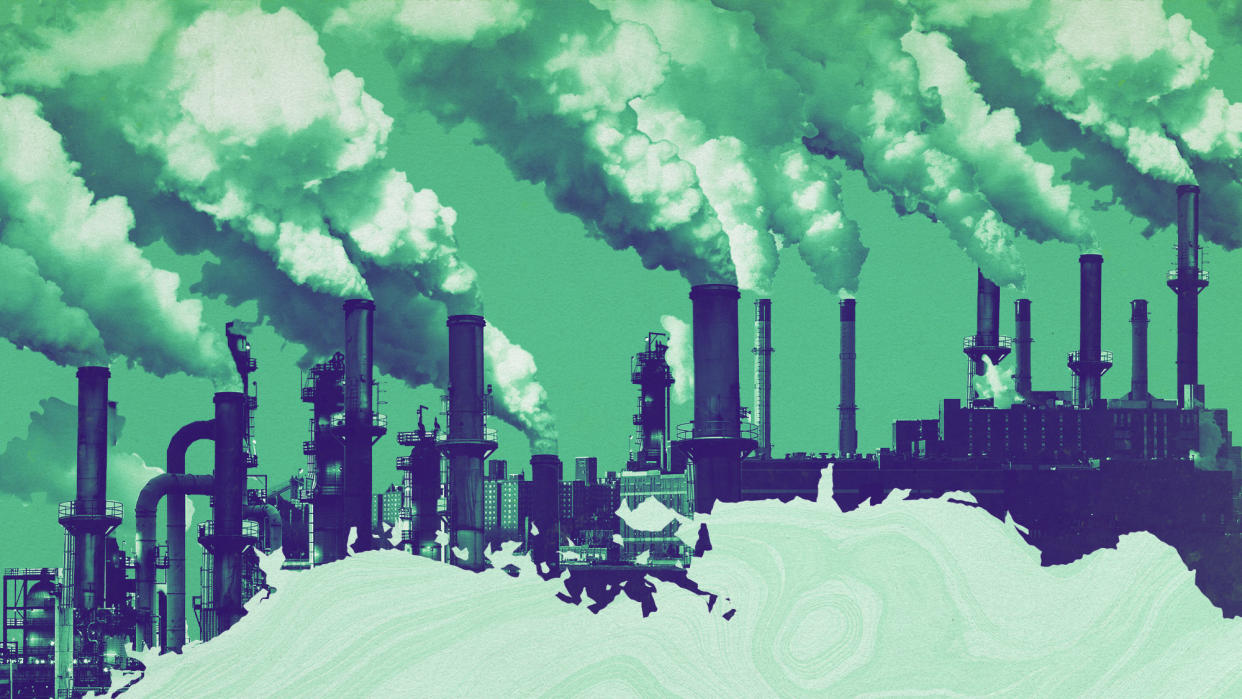Poor pollution regulation (still) impacts the lives of Gulf Coast residents

It is estimated that the United States' "most climate-vulnerable communities are along the industrialized Gulf Coast," according to an environmental index cited by Scientific American. The Gulf is a "flood- and hurricane-prone region with deep pockets of poverty, poor health and economic and racial inequities," the outlet added, and much of this is due to the "area's legacy of industrial pollution and high cancer rates."
While the causes of environmental hazards within the Gulf Coast are clear, the hardships are ongoing for residents of the area due to lackadaisical regulations on regional pollution. Much of the pollution comes from the mass quantities of oil refineries on the Gulf Coast. In 2021, it was reported that the Gulf's Houston-area refineries alone account for "more than a quarter of [crude oil] production in the United States." Most of these refineries also have very few air pollutant regulations.
If the problems with pollution are known throughout the Gulf Coast, why has it been such a challenge to implement proper regulations? And what legacy is being left for the people of the region as a result?
How is pollution affecting the Gulf Coast?
Many people in the region "experience negative health impacts from pollution issued from local refineries and plants," The Washington Post reported. The Post added that this can include "odd smells; itchy noses, throats and eyes; and frequent fires."
The chemicals used in Gulf Coast refineries often lead to residents being exposed to toxic carcinogens such as benzene. Most people affected by these carcinogens are "people of color and low-income individuals" who disproportionately live closer to industrial areas, the Post reported.
The problem with environmental hazards in the region is not new: A 1981 Texas Monthly article described Texas' Gulf cities as "the Cancer Belt." However, the issue has been turbocharged in recent decades as a result of continued refining. "Our health lets us know that something isn't right," Lois Malvo, a resident of Lake Charles, Louisiana, told the Post. She said that the residents of her town were "being attacked by the industry because we're vulnerable people." And while Texas has its Cancer Belt, a stretch of southeastern Louisiana is often referred to as "Cancer Alley" for the similar health issues seen throughout.
The broader Gulf Coast region is also prone to natural disasters that can compound these issues. In anticipation of Hurricane Laura's landfall in 2020, Texas refineries "began shutting down, hurriedly burning off unprocessed chemicals and releasing vast amounts of pollution," The Texas Tribune reported. This resulted in "an additional 680,000 pounds of pollution" being released into the atmosphere.
What regulations are in place?
Regulations surrounding these emissions "inhabit a legal gray area," the Tribune noted. While the Environmental Protection Agency (EPA) has tried to enforce regulatory decisions, "the decision to penalize polluters largely lies with state regulatory agencies — who rarely punish companies." An analysis by Texas' own regulators found that the state government "pursues penalties and monetary fines in just 8% of cases."
And the steps that are being taken are relatively new. The EPA "has only recently begun to crack down on air pollution in the region," agency employees told the Post. Despite this recent enforcement, "eight facilities continued to release excessive amounts of [benzene], which is one of the most dangerous pollutants that these industries emit," the Post reported. Of these eight facilities, "all but one of them are near disadvantaged communities in Texas and Louisiana."
Then there are the policies in place that seemingly work to protect the polluting companies. When environmental groups in Texas complained about the expansion of a polluting oil terminal in Port Lavaca, the company involved claimed that the groups "had no right to bring forth a challenge because they lived more than one mile" from the terminal in question, the San Antonio Express-News reported. However, Texas' environmental regulation commission told the Express-News they had "never adopted a one-mile policy."
What's next for regulators?
The Biden administration has been working to implement further regulations for the Gulf Coast, and last year "proposed a new regulation to significantly reduce hazardous air pollutants from chemical plants," The New York Times reported. The regulations would apply to "more than 200 facilities spread across Texas and Louisiana" and elsewhere along the Gulf Coast. It would additionally "update several regulations governing emissions from chemical plants, some of which have not been tightened in nearly 20 years."
Despite this, enforcement of regulations is still hard to come by in the region. "We put all the data together and then enforcement never happens," Wilma Subra, a Louisiana chemist, told the Post. "And we're running out of this administration's time."

